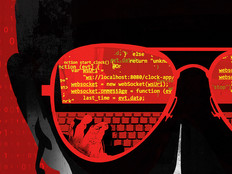How the Internet of Things Can Improve Quality of Life
With billions of computers and mobile devices exchanging information online, tech observers are bracing for an onslaught of connected objects ranging from automobiles to home appliances.
State and local governments will be among the early adopters of the Internet of Things, accounting for 16 percent of the total market, according to research from IDC. Smart cities represent about 29 percent of total government IoT spending.
Ruthbea Yesner Clarke, Smart Cities research director for IDC, points out that the use of sensors and other collection devices to transmit traffic and air quality data to central operations isn't necessarily new. Now, however, mobile technologies, analytics and cloud computing make it easier for public-sector agencies to collect, store and share information to improve transparency and accountability. "Governments can harness analytics to get a much deeper understanding of city systems and make positive changes around efficiency, sustainability, cost savings and quality of life," she says.
Cisco Systems calls this mashing up of information the Internet of Everything, or IoE.
"It's about people, processes, things and the data all coming together to do something differently," says Dan Kent, Cisco's public-sector chief technology officer and senior director of systems engineering. IoE can bring intelligence, efficiency and value to many city functions: street and building lighting, traffic management, public transportation, air quality control and water and electricity distribution.
Estimated installed number of connected devices worldwide by 2020
SOURCE: IDC, "Worldwide Internet of Things 2014 Top 10 Predictions," January 2014
Improving Safety
Montgomery County, Md., has used the Internet of Things to improve public safety in low-income housing, says Chief Innovation Officer Dan Hoffman. The county has harnessed long-range, low-power ultra-narrowband wireless technology to transmit data from sensors monitoring smoke, hazardous gases, air quality, light and temperature to an antenna atop an executive office building in Rockville.
The data is translated and sent over the Internet to an open portal for sensor data built on IBM's Bluemix Cloud Service. If a hazardous condition is detected, applications configure Short Message Service and phone alerts to contact the resident and determine if everything is OK. If not, or if there's no answer, the alert is passed on to first responders.
"We built many of the sensors from scratch using off-the-shelf parts, and deployed them in residences, laundry rooms, utility areas and other common spaces," Hoffman says. With the pilot complete, Montgomery County will expand its ultra-narrowband coverage and this fall establish The Thingstitute, an IoT lab focused on public-sector apps.
Hoffman says Montgomery County liked the technology model because it makes the safety aspects of IoT available to everyone without making them pay for broadband service. Eventually, the county plans to allow third parties to connect to the infrastructure and use it for their own purposes. "I'm really interested in seeing what others come up with, perhaps even more than in what I'm doing," he says.
A Call to Action
The city of San Jose, Calif., partnered with Intel to collect and share sensor information with the public as a way of encouraging public transportation use. For its pilot program, it distributed air, traffic and transportation sensors to key urban shopping areas, major intersections, public transportation and school locations. The sensors, which use Intel processors, communicate information over 3G and 4G cellular networks directly to an Intel cloud.
CIO Vijay Sammeta says San Jose has deployed the sensors and is now integrating and mashing up the data for analysis using cloud-based Hadoop clusters. The city plans to make the data available to the public via dashboards and open application programming interfaces for third-party development.
"We're keeping an open mind on what the results will be and what types of actions we'd like to consider," Sammeta says. "We want to start a conversation with the community and encourage people not so much to replace driving with public transportation, but perhaps drive to a light-rail stop to take public transportation downtown."
As with Montgomery County, Sammeta is excited about the potential for third parties to develop innovative mobile apps. "Change requires awareness and a sense of urgency," he says. "Real-time data and citizen participation are integral parts of defining the future for communities like San Jose, where growth is likely to outpace city resources."
Sensors and Streetcars
Kansas City, Mo., adopted a smart and connected community strategy that seeks to tap high-speed connections, sensors, public Wi-Fi access, mobile devices, kiosks, analytics and entrepreneurial involvement to streamline and improve services and urban quality of life.
In the early stages of deployment, Kansas City is working closely with Cisco to create a comprehensive strategy by October and complete the project by next fall. The plan will take advantage of a new streetcar line to provide a starting point for connectivity and sensors for lighting, water systems and parking.
"There's a lot of infrastructure and utility work that has to be done already to prepare the roads for the streetcar, so we can take this opportunity to install sensors to potentially monitor water mains and other utilities," says Ashley Hand, chief innovation officer for Kansas City. "We hope to use them to detect subtle changes in pressure underground that may help us discover and address a problem before it causes a water main break."
Smart, responsive street lighting poses another IoT opportunity. "You don't need the same lighting at all hours of the evening and night or if there's a full moon," Hand notes.
The "living lab" concept will create a platform to encourage entrepreneurs to come up with ideas to improve services and quality of life and test them in Kansas City. "We want to open up the city to let entrepreneurs help us understand and address complex problems in ways that we might not have ever thought of or have the capacity for," says Hand.
Montgomery County, San Jose and Kansas City are only beginning to scratch the surface of what IoT can offer government. As the technology matures, standards are developed, and the public-sector partners with third parties and the public, the possibilities will continue to grow. "I don't see this trend slowing down anytime soon," says Cisco's Kent.
Here are 10 tips to help your agency implement IoT.









